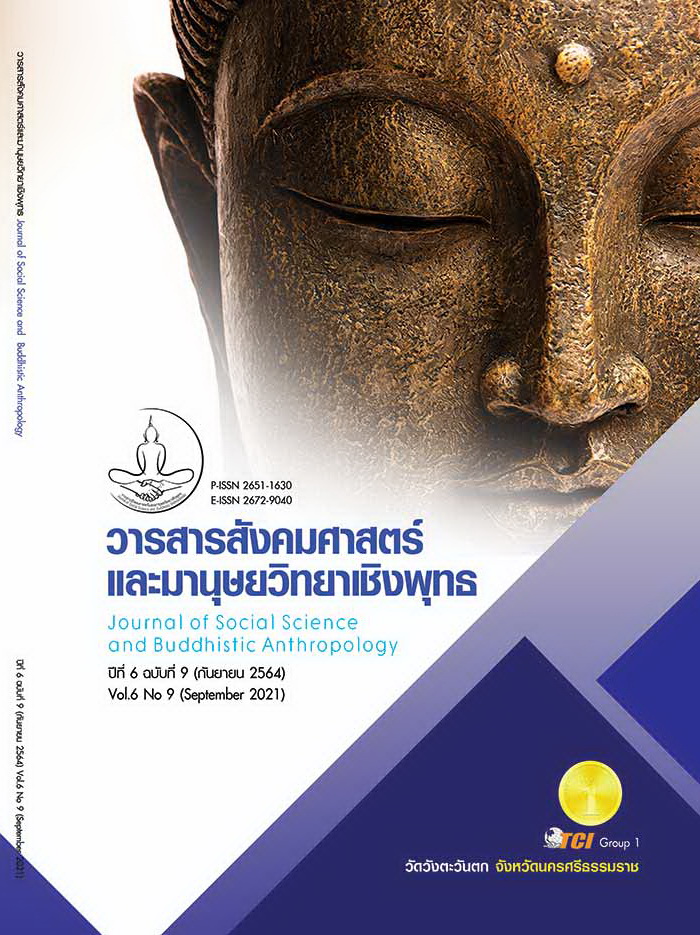THE CONSERVATION OF THE “HEET SIB SONG KONG SIB SEE” TRADITIONS OF THE LAO ETHNIC GROUPS IN CHAI NAT PROVINCE
Keywords:
Conservation, Tradition, Heet Sib Song Kong Sib See, Lao Ethnic GroupAbstract
The objectives of this research article were to 1) investigate the cultural context, beliefs, and changes in the “Heet Sib Song Kong Sib See” tradition of Lao ethnic groups in Chainat Province from the past to the present. 2) analyze the value, definition, and related system of the “Heet Sib Song Kong Sib See” tradition., and 3) synthesize guidelines for the preservation of the “Heet Sib Song Kong Sib See” tradition of the Lao ethnic groups in Chai Nat province by engaging with the community. Qualitative research is conducted according to Participatory Action Research (PAR). Data collection techniques include semi-structured interviews and focus group discussions. Data were collected by Purposive Selected: 19 informants from Lao Wiang ethnic group, Ban Noen Kham and Lao Khrang ethnic group, Ban Kut Chok, and representatives of relevant agencies. Data were analyzed based on grounded theory in the Ethnography of Charmaz. The research results revealed that the culture of Lao ethnic groups in Chainat province is dress, weaving, Buddhist traditions, food, and wisdom. The beliefs of Lao ethnic groups in Chainat are lifestyle, agriculture, sacred things, prophecy, and auspicious time. Changes in the tradition of “Heet Sib Song Kong Sib See” of Lao ethnic groups in Chai Nat Province are localization and a community constitution. Value, definition, and relationship system of Lao ethnic groups in Chai Nat Province is Sorong, festivals and the culture of “Join forces" create a network. The conservation for the “Heet Sib Song Kong Sib See” tradition of the Lao ethnic groups in Chai Nat province can be synthesized in 3C; that is, continuity, creativity, and connectivity
References
กระทรวงพัฒนาสังคมและความมั่นคงมนุษย์. (2557). กระทรวงพัฒนาสังคมและความมั่นคงมนุษย์. กรุงเทพมหานคร: กรมประชาสัมพันธ์.
ฉวีวรรณ ประจวบเหมาะ. (2549). ปริศนาว่าด้วยอัตลักษณ์และเอกลักษณ์ชาติพันธุ์ของกลุ่มที่ใช้ภาษา "ตระกูลไท". ใน สุภางค์ จันทวานิช และสุภาวดี มิตรสมหวัง (บรรณาธิการ)รวมบทความทางสังคมวิทยาและมานุษยวิทยา ปี 2549 เนื่องในโอกาสเกษียณอายุราชการของ ศ.ดร.อมรา พงศาพิชญ์ (หน้า 1-20). กรุงเทพมหานคร: คณะรัฐศาสตร์ จุฬาลงกรณ์มหาวิทยาลัย.
ชาย โพธิสิตา. (2554). ศาสตร์และศิลป์ แห่งการวิจัยเชิงคุณภาพ. (พิมพ์ครั้งที่ 5). กรุงเทพมหานคร: อมรินทร์ พริ้นติ้ง.
ธวัช ปุณโณทก. (2547). วรรณกรรมอีสาน. กรุงเทพมหานคร: มหาวิทยาลัยรามคําแหง.
นพดล พรามณี. (2556). การคงอยู่และการเปลี่ยนแปลงของฮีตสิบสองคองสิบสี่: กรณีศึกษา หมู่บ้านชำโสม จังหวัดปราจีนบุรี. วารสารสถาบันวัฒนธรรมและศิลปะ, 15(1), 1-16.
นฤพนธ์ ด้วงวิเศษ. (2563). นิเวศวิทยาวัฒนธรรม. กรุงเทพมหานคร: ศูนย์มานุษยวิทยาสิรินธร (องค์การมหาชน).
บังอร บุญปั้น. (2561). กลุ่มชาติพันธุ์ลาวในจังหวัดพระนครศรีอยุธยา: ประวัติความเป็นมา วัฒนธรรม และแนวทางการส่งเสริมการท่องเที่ยวเชิงวัฒนธรรม. วารสารมหาวิทยาลัยนครพนม, 8(1), 103-112.
พระสุขี ชาครธมฺโม (ศรีมาตย์). (2553). ศึกษาวิเคราะห์ การเปลี่ยนแปลงของประเพณีฮีตสิบสอง: ศึกษากรณีตำบลเมืองเก่า อำเภอเมือง จังหวัดขอนแก่น. ใน วิทยานิพนธ์พุทธศาสตรมหาบัณฑิต สาขาพระพุทธศาสนา. มหาวิทยาลัยมหาจุฬาลงกรณราชวิทยาลัย.
วิภาส ปรัชญากรณ์. (2563). มานุษยวิทยา : ความรู้ฉบับพกพา โดย John Monaghan และ Peter Just (แปล). กรุงเทพมหานคร: บุ๊คสเคป.
สัญญา สัญญาวิวัฒน์. (2550). ทฤษฎีสังคมวิทยา เนื้อหาและแนวการใช้ประโยชน์เบื้องต้น (พิมพ์ครั้งที่ 12). กรุงเทพมหานคร: สำนักพิมพ์จุฬาลงกรณ์มหาวิทยาลัย.
สุภางค์ จันทวานิช. (2559). ทฤษฎีสังคมวิทยา (พิมพ์ครั้งที่ 7). กรุงเทพมหานคร: สำนักพิมพ์จุฬาลงกรณ์มหาวิทยาลัย.
เสฐียรโกเศศ. (2505). การศึกษาเรื่องประเพณีไทย. กรุงเทพมหานคร: ราชบัณฑิตยสถาน.
อมรา พงศาพิชญ์. (2537). วัฒนธรรม ศาสนา และชาติพันธุ์: วิเคราะห์สังคมไทย แนวมานุษยวิทยา. (พิมพ์ครั้งที่ 3). กรุงเทพมหานคร: จุฬาลงกรณ์มหาวิทยาลัย.
Charmaz, K. (2006). Constructing Grounded Theory: A Practical Guide Through Qualitative Analysis. London: SAGE.
Spradley, J. P. (1979). Participant observation. USA: Holt, Rinehart and Winston, Inc.
UNESCO. (2003). Convention for the safeguarding of the Intangible Cultural Heritage. France: Paris.








